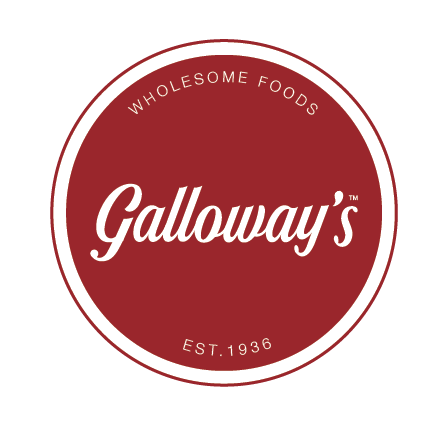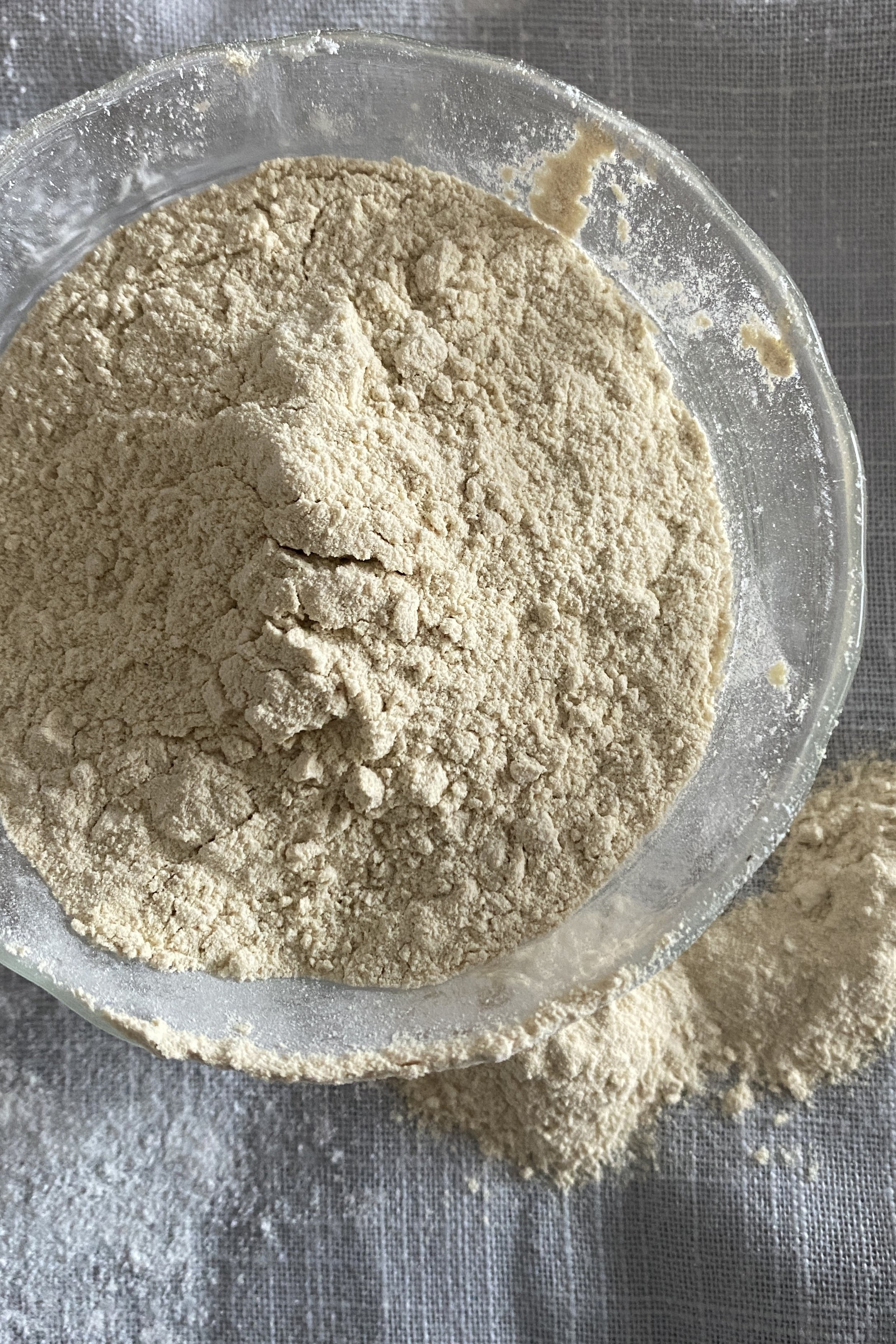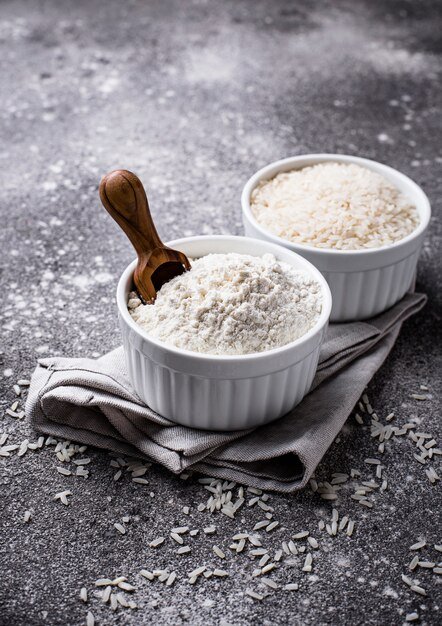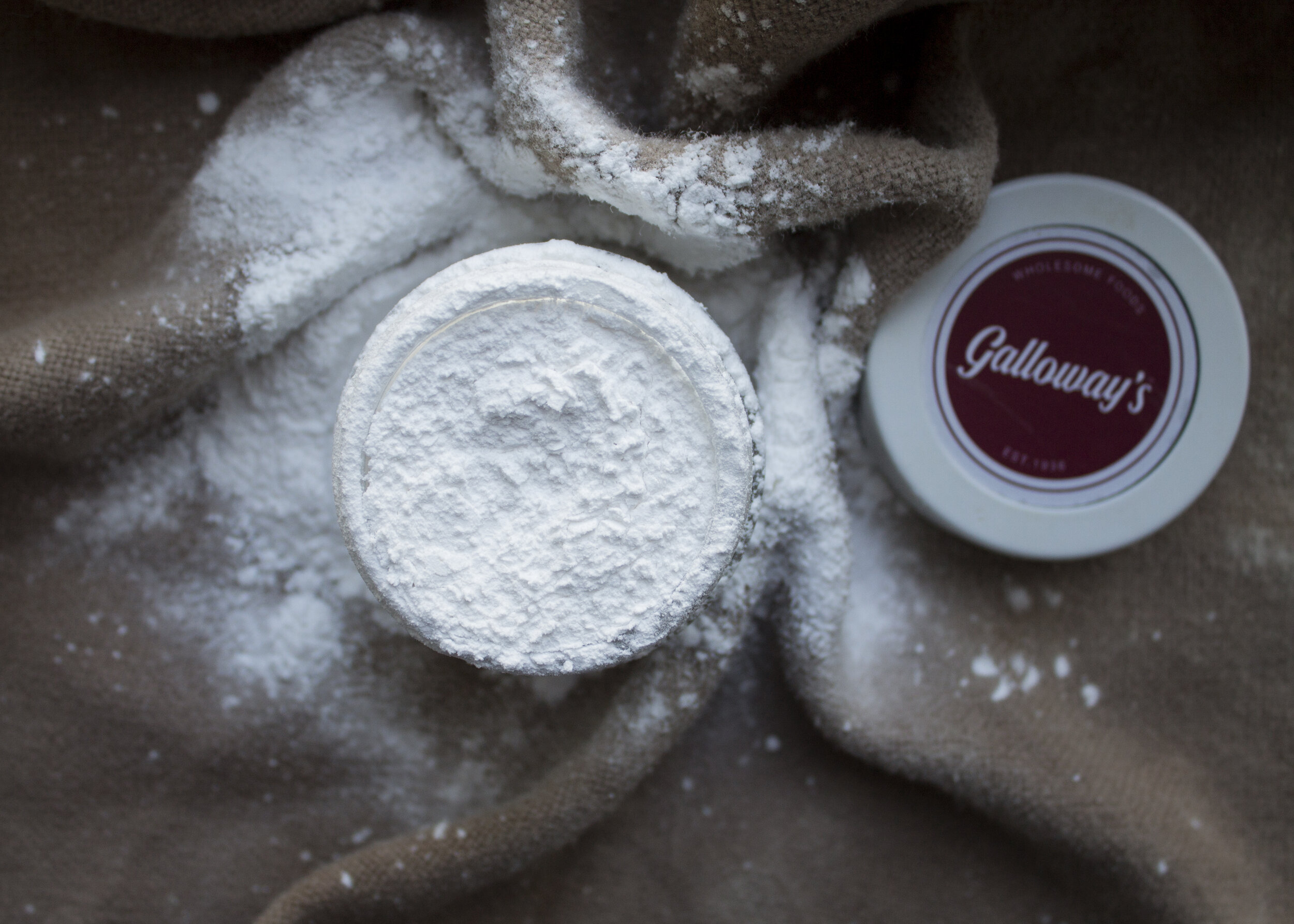Vital wheat gluten
Galloways Vital wheat gluten is a flour-like powder that contains nearly all gluten and minimal starch. It's made by hydrating wheat flour, which activates the gluten protein, and it's then processed to remove everything but the gluten. It's then dried out and ground back into a powder again. The recommended ratio is one tablespoon of vital wheat gluten per two cups of flour. This is especially helpful for bread recipes using low-protein flour varieties, such as wholewheat or rye, or recipes with lots of mix-ins, like nuts or fruits, to provide more structure and stability. The other main use for vital wheat gluten is Seitan, also known as "wheat meat," which is a vegan meat alternative. Seitan, is often made by mixing vital wheat gluten with spices and seasonings, then adding a liquid. Once a stiff dough forms, it's either steamed, baked, or boiled to create a chewy and savory texture similar to meat. Seitan can be used to emulate chicken, breakfast sausage, pepperoni, and more. This method of preparing gluten was first recorded in 6th century China, and it's still popular amongst the vegetarian Buddhist population in Asian countries to this day.
Galloways Vital wheat gluten is a flour-like powder that contains nearly all gluten and minimal starch. It's made by hydrating wheat flour, which activates the gluten protein, and it's then processed to remove everything but the gluten. It's then dried out and ground back into a powder again. The recommended ratio is one tablespoon of vital wheat gluten per two cups of flour. This is especially helpful for bread recipes using low-protein flour varieties, such as wholewheat or rye, or recipes with lots of mix-ins, like nuts or fruits, to provide more structure and stability. The other main use for vital wheat gluten is Seitan, also known as "wheat meat," which is a vegan meat alternative. Seitan, is often made by mixing vital wheat gluten with spices and seasonings, then adding a liquid. Once a stiff dough forms, it's either steamed, baked, or boiled to create a chewy and savory texture similar to meat. Seitan can be used to emulate chicken, breakfast sausage, pepperoni, and more. This method of preparing gluten was first recorded in 6th century China, and it's still popular amongst the vegetarian Buddhist population in Asian countries to this day.
Galloways Vital wheat gluten is a flour-like powder that contains nearly all gluten and minimal starch. It's made by hydrating wheat flour, which activates the gluten protein, and it's then processed to remove everything but the gluten. It's then dried out and ground back into a powder again. The recommended ratio is one tablespoon of vital wheat gluten per two cups of flour. This is especially helpful for bread recipes using low-protein flour varieties, such as wholewheat or rye, or recipes with lots of mix-ins, like nuts or fruits, to provide more structure and stability. The other main use for vital wheat gluten is Seitan, also known as "wheat meat," which is a vegan meat alternative. Seitan, is often made by mixing vital wheat gluten with spices and seasonings, then adding a liquid. Once a stiff dough forms, it's either steamed, baked, or boiled to create a chewy and savory texture similar to meat. Seitan can be used to emulate chicken, breakfast sausage, pepperoni, and more. This method of preparing gluten was first recorded in 6th century China, and it's still popular amongst the vegetarian Buddhist population in Asian countries to this day.






